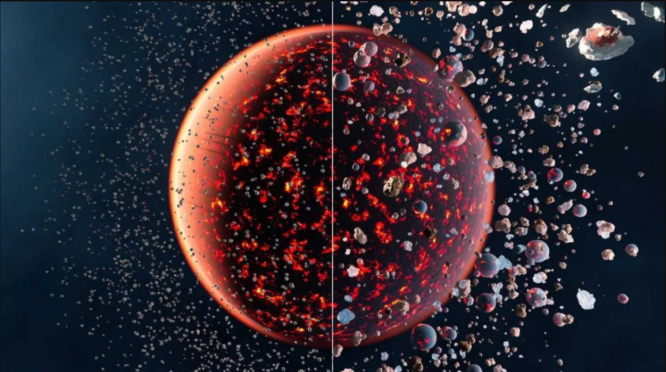Earth may have developed faster than thought from small millimeter-sized stones that collected over a few million years.
The new idea also suggests that our infant planet thirstily sucked water from space rather than frozen comets delivering it. The idea suggests that aquatic and habitable planets surrounding other stars may be more prevalent than thought, which might impact the search for extrasolar life.
The team’s new idea predicts that when the sun was a newborn star surrounded by a proto-planetary disk of gas and dust 4.5 billion years ago, small dust particles would be swiftly scooped up by developing planets once they reached a specific size. This “vacuuming up” of disk material gave the baby Earth water.
“The disk has numerous frozen particles. “The vacuum cleaner effect draws in dust and ice,” explained Isaac Onyett, a Ph.D. student at the Centre for Star and Planet Formation, University of Copenhagen. “This process contributes to the presence of water during Earth’s formation, rather than relying on a chance event delivering water 100 million years later.”

“People have debated how planets form for a long time,” said University of Copenhagen geochemist Martin Schiller, who contributed to the idea. Planets are produced by slow collisions over 100 million years. Water on Earth would need a chance event in this scenario.”
Ice comets pelted the globe in its latter stages.
“If that’s how Earth was formed, we’re lucky to have water,” Schiller remarked. “Water on planets outside our solar system is unlikely.”
Silicon isotopes were used to measure planet formation mechanisms and timeframes to develop the new theory. The researchers found a link between Earth and other rocky planets by analyzing isotopes in over 60 meteorites and planetary bodies.
Scientists hypothesized that less chance means more water on other worlds.
“This theory would predict that whenever you form a planet like Earth, you will have water on it,” team member and Globe Institute professor Martin Bizzarro stated. “If you go to another planetary system where there is a planet orbiting a star the size of the sun, then the planet should have water if it is the right distance.”
The study was published in Nature on June 14.

